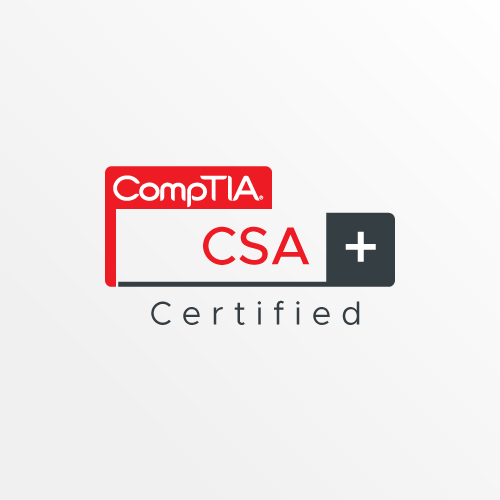Objectives
The CompTIA CSA+ certification is a vendor-neutral credential. The CompTIA CSA+ exam (Exam CS0-001) is an internationally targeted validation of intermediate-level security skills and knowledge. The course has a technical, “hands-on” focus on IT security analytics.
The CompTIA CSA+ exam is based on these objectives:
Threat Management
Vulnerability Management
- Cyber Incident Response
- Security Architecture and Tool Sets





